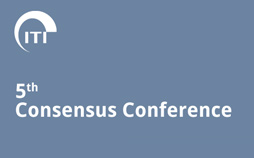
Clinical Performance of Screw- versus Cement-Retained Implant-Supported Fixed Reconstructions
General Comments
The restorative connection to the implant or abutment can be either screw- or cement-retained. With screw retained restorations, an abutment or a mesostructure may be separate from the restoration (two piece) or combined as part of the fabrication procedure (one piece).
In general, both retention types (screw- and cement- retained) have their advantages and limitations. The consensus statements of the third review focus on biologic and technical failures and complication rates observed with screw- and cement-retained implant-supported fixed reconstructions.
Consensus Statements
- High survival rates can be achieved with both cemented and screw-retained fixed implant-supported prostheses. Neither failure nor complication can be avoided by selecting a prosthesis retention type.
- Cemented all-ceramic prostheses have a higher failure rate than cemented metal-ceramic prostheses. However, no difference was found with screw retained prostheses.
- Based upon the literature reviewed, the type of cement used does not influence the failure rate of cemented prostheses.
- Technical complications occurred (estimated annual event rate of up to 10%) with both cemented and screw-retained prostheses. In the pooled data, the cemented prostheses exhibited a higher rate of technical complication.
- Screw-retained prostheses exhibited a higher rate of ceramic chipping than cemented prostheses.
- Biological complications can be found (estimated annual event rate of up to 7%) with both cemented and screw-retained prostheses. Cemented prostheses exhibit a higher rate of fistula formation and suppuration.
Treatment Guidelines
Based on the data in this review, a universal recommendation cannot be made for either cementation or screw retention. However, in a clinical situation that offers a choice of prosthesis retention type, the following recommendations may be made:
Cement retention may be recommended:
- For short-span prostheses with margins at or above tissue level to simplify fabrication procedures
- To enhance esthetics when the screw access passes transocclusally or in cases of malposition of the implant
- When an intact occlusal surface is desirable
- To reduce initial treatment costs
- It is further recommended that the clinician understand that the procedures involved with cement retention for implant-supported crowns are not simple and should be carried out with great caution.
Downloads and References
Related items
Share this page
Download the QR code with a link to this page and use it in your presentations or share it on social media.
Download QR code